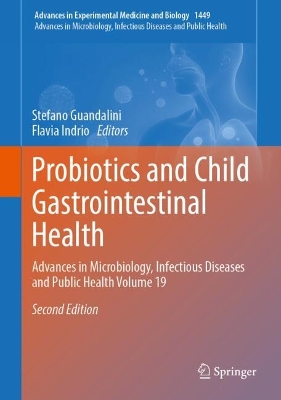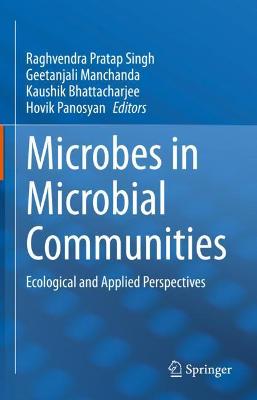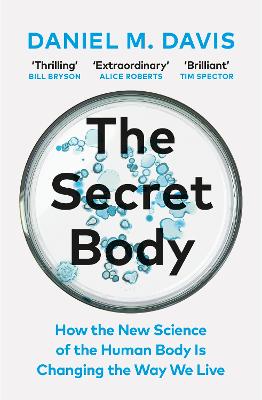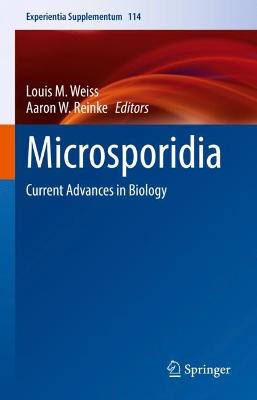Bacteriophages as Drivers of Evolution
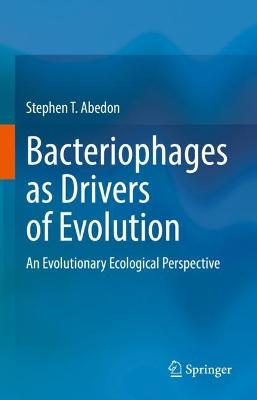 portes grátis
portes grátis
Bacteriophages as Drivers of Evolution
An Evolutionary Ecological Perspective
Abedon, Stephen T.
Springer Nature Switzerland AG
05/2022
377
Dura
Inglês
9783030943080
15 a 20 dias
843
Descrição não disponível.
Part I. Introductions
1 Bacteriophages, a Brief Introduction
1.1 Introduction to Phages and Their Biology
1.2 Most Phages Lyse Their Hosts to Release Virion Progeny
1.3 Some Variations on the Concept of Lysogeny
1.4 Phage Infections Start with Adsorption
1.5 Some Phages Can Transport Bacterial DNA between Bacteria via Transduction
References
2 A Closer Overview of Phage Infections
2.1 Lytic Cycles Kill Bacteria but also Produce New Phage Virions
2.2 Some Vagaries of Lysogenic Cycles
2.3 Looking at Lysogenic Cycles from Ecological Perspectives
2.4 Looking at Lysogenic Cycles from Evolutionary Perspectives
2.5 Chronic Cycles Release New Phage Virions without Killing Host Bacteria
References
3 Evolution Biology Basics
3.1 Introduction to Evolution
3.2 The No-Evolution Default Assumption
3.3 Natural Selection and Darwinian Fitness: Relative and Absolute
References
4 Brief Introduction to Phage Ecology
4.1 Phage Organismal Ecology
4.2 Phage Population Ecology
4.3 Phage Community Ecology
4.4 Prophages Are at the Interface of Phage Population and Community Ecologies
4.5 Mobile Genetic Elements Parasitizing Phages
References
Part II. Mutation, Genetic Drift, and Non-Random Mating
5 Bacterial Mutation Associated with Phages: Insertion
5.1 Mutations, Mutants, Mutagenesis
5.2 Secondary Insertion Sites
5.3 For Phage Mu, Insertional Mutagenesis Is a Key Aspect of Its Infection Cycle
5.4 CRISPR Spacer Sequences Are and Are Not Insertion Mutations
References
6 Bacterial Mutation Associated with Phages: Deletions
6.1 Pseudogenes
6.2 Genomic Immunity against Prophages?
6.3 Evidence for the Existence of Genomic Immunity?
6.4 Just How Dangerous are Prophages?
6.5 Just How Dangerous Are Pseudogenes?
6.6 Bacterial Chromosomal Rearrangements and Prophages
References
7 Genetic Drift and Phages
7.1 Stochasticism versus Determinism
7.2 Sampling Error
7.3 Reduction of Bacterial Population Size: Genetic Bottlenecking
7.4 Potential Impact of Spatial Structure: Founder Effects
References
8 Phages and sexual Bacterial Populations
8.1 Introducing Some Natural Selection: Genetic Hitchhiking
8.2 Muller's Ratchet
References
9 Phage Impact on Non-Random Mating Among Bacteria
9.1 Transduction and Panmixis
9.2 Various Limitations on Random Mating
9.3 Bacterial Retention of Transduced DNA
9.4 What Happens If There Is No Horizontal Gene Transfer within Populations?
References
Part III. Genetic Migration
10 Genetic Migration and Phages
10.1 Phage-Mediated Introduction of New Alleles into Bacterial Populations
10.2 Assortative Mating Introduced by Phages
10.3 Reciprocal versus Non-reciprocal Transduction
10.4 Direct and Indirect Reciprocal Transduction
10.5 Stabilizing versus Disruptive Transduction
References
11 Reproductive Isolation and Its Violation by Phages
11.1 Barriers to Transduction as Defining Bacterial Species?
11.2 Zones of Paralogy
11.3 All the World's a Phage
11.4 Moron Accretion
References
12 Phage-Provided Environmental DNA and Superspreading
12.1 Uptake of Naked DNA
12.2 Phage-Generation of eDNA
12.3 Phages as Mediators of 'Superspreading'
12.4 Temperate Phages as Generators of eDNA
References
13 Transduction of Large Amounts of DNA
13.1 Generalized Transduction
13.2 Homologous Recombination versus Illegitimate Recombination
13.3 Genomic Islands
References
Part IV. Prophage-Encoding of Bacterium-Expressed Genes
14 Phage Morons
14.1 What Is a Moron? (Narrow Sense)
14.2 What Isn't a Moron? (Narrow Sense)
14.3 Limitations on Phage Acquisition of Additional Genes
14.4 Morons as Lysogenic Converting Genes
References
15 Why Lysogenic Conversion?
15.1 More than Lytic Cycle Buttressing of Accessory Gene Encoding?
15.2 A Plethora of Possible Selective Mechanisms
15.3 Indirect Selection for Lysogenic Conversion
15.4 Direct selection for Lysogenic Conversion
15.5 Lysogenic Conversion and Ecotypes
15.6 Phage-Encoded Phage Resistance
References
16 Prophages Preventing Phage Superinfection
16.1 Superinfection Immunity
16.2 Superinfection Exclusion
16.3 Prophage Encoding of Other Phage-Resistance Mechanisms
References
17 Domestication of Phage Genes
17.1 Merging of Genomes
17.2 Merging of Phage Genomes
17.3 Merging of Phage and Bacterial Genomes
17.4 Phage Gene Domestication without Prophage Integration
17.5 Getting Rid of Plasmid Prophage Genes?
References
Part V. Phage Resistance
18 Resistance to Phages, Part I: Overview
18.1 Categorizing Phage-Resistance by Outcomes
18.2 Avoidance of Phage Infection
18.3 Negation of Phage Infections
18.4 Bacterial Self-Sacrifice upon Phage Infection
18.5 Delay of Phage Propagation
18.6 Summary
References
19 Resistance to Phages, Part II: Bacteria Live!
19.1 Avoidance of Phage Genome Uptake
19.2 Negating Phage Infections Soon after Initiation
References
20 Resistance to Phages, Part III: Bacteria Die...
20.1 The Bacterial Self-Sacrifice of Abortive Infections
20.2 Delay: Slowing Down Phage Population Growth
References
21 Bacterial Mutation to Phage Resistance
21.1 A Plethora of Possible Targets of Mutation?
21.2 Rates of Mutation to Resistance
21.3 A Wee Bit of Advice
References
22 Pleiotropic Costs of Phage Resistance
22.1 Antagonistic Pleiotropies
22.2 Some History
22.3 A Sampling of More Modern Studies
References
Part VI. Natural Selection
23 Concepts of Natural Selection in Light of Phage Exposure
23.1 Higher Fitness
23.2 Beneficial Alleles and Adaptation
23.3 Historical Contingencies
23.4 Hard Selection and Soft Selection
23.5 Coevolution
References
24 Frequency-Dependent Selection in Light of Phage Exposure
24.1 Ecological versus Evolutionary: Three Distinctions
24.2 Stabilizing, Disruptive, Polymorphic, Monomorphic
24.3 Disruptive Frequency-Dependent Selection-Extracellular Toxins
24.4 Disruptive Frequency-Dependent Selection-Induced Prophages
24.5 Frequency Dependence or Instead Density Dependence?
24.6 Stabilizing Frequency-Dependent Selection Involving Phages
24.7 Killing the Winner
24.8 Stabilizing Frequency-Dependent Selection Mimicking Muller's ratchet?
References
25 A Primer on Phage-Bacterium Antagonistic Coevolution
25.1 Preamble
25.2 Introduction to Coevolution and Antagonistic Coevolution
25.3 Short Historical Overview of Phage-Bacterium Antagonistic Coevolution
25.4 Brief Primer on Phage-Bacterium Antagonistic Coevolution
25.5 Different Faces of Phage-Bacterium Antagonistic Coevolution
25.6 An Indefinite Series of Coevolutionary Change?
25.7 Coda
References
?
1 Bacteriophages, a Brief Introduction
1.1 Introduction to Phages and Their Biology
1.2 Most Phages Lyse Their Hosts to Release Virion Progeny
1.3 Some Variations on the Concept of Lysogeny
1.4 Phage Infections Start with Adsorption
1.5 Some Phages Can Transport Bacterial DNA between Bacteria via Transduction
References
2 A Closer Overview of Phage Infections
2.1 Lytic Cycles Kill Bacteria but also Produce New Phage Virions
2.2 Some Vagaries of Lysogenic Cycles
2.3 Looking at Lysogenic Cycles from Ecological Perspectives
2.4 Looking at Lysogenic Cycles from Evolutionary Perspectives
2.5 Chronic Cycles Release New Phage Virions without Killing Host Bacteria
References
3 Evolution Biology Basics
3.1 Introduction to Evolution
3.2 The No-Evolution Default Assumption
3.3 Natural Selection and Darwinian Fitness: Relative and Absolute
References
4 Brief Introduction to Phage Ecology
4.1 Phage Organismal Ecology
4.2 Phage Population Ecology
4.3 Phage Community Ecology
4.4 Prophages Are at the Interface of Phage Population and Community Ecologies
4.5 Mobile Genetic Elements Parasitizing Phages
References
Part II. Mutation, Genetic Drift, and Non-Random Mating
5 Bacterial Mutation Associated with Phages: Insertion
5.1 Mutations, Mutants, Mutagenesis
5.2 Secondary Insertion Sites
5.3 For Phage Mu, Insertional Mutagenesis Is a Key Aspect of Its Infection Cycle
5.4 CRISPR Spacer Sequences Are and Are Not Insertion Mutations
References
6 Bacterial Mutation Associated with Phages: Deletions
6.1 Pseudogenes
6.2 Genomic Immunity against Prophages?
6.3 Evidence for the Existence of Genomic Immunity?
6.4 Just How Dangerous are Prophages?
6.5 Just How Dangerous Are Pseudogenes?
6.6 Bacterial Chromosomal Rearrangements and Prophages
References
7 Genetic Drift and Phages
7.1 Stochasticism versus Determinism
7.2 Sampling Error
7.3 Reduction of Bacterial Population Size: Genetic Bottlenecking
7.4 Potential Impact of Spatial Structure: Founder Effects
References
8 Phages and sexual Bacterial Populations
8.1 Introducing Some Natural Selection: Genetic Hitchhiking
8.2 Muller's Ratchet
References
9 Phage Impact on Non-Random Mating Among Bacteria
9.1 Transduction and Panmixis
9.2 Various Limitations on Random Mating
9.3 Bacterial Retention of Transduced DNA
9.4 What Happens If There Is No Horizontal Gene Transfer within Populations?
References
Part III. Genetic Migration
10 Genetic Migration and Phages
10.1 Phage-Mediated Introduction of New Alleles into Bacterial Populations
10.2 Assortative Mating Introduced by Phages
10.3 Reciprocal versus Non-reciprocal Transduction
10.4 Direct and Indirect Reciprocal Transduction
10.5 Stabilizing versus Disruptive Transduction
References
11 Reproductive Isolation and Its Violation by Phages
11.1 Barriers to Transduction as Defining Bacterial Species?
11.2 Zones of Paralogy
11.3 All the World's a Phage
11.4 Moron Accretion
References
12 Phage-Provided Environmental DNA and Superspreading
12.1 Uptake of Naked DNA
12.2 Phage-Generation of eDNA
12.3 Phages as Mediators of 'Superspreading'
12.4 Temperate Phages as Generators of eDNA
References
13 Transduction of Large Amounts of DNA
13.1 Generalized Transduction
13.2 Homologous Recombination versus Illegitimate Recombination
13.3 Genomic Islands
References
Part IV. Prophage-Encoding of Bacterium-Expressed Genes
14 Phage Morons
14.1 What Is a Moron? (Narrow Sense)
14.2 What Isn't a Moron? (Narrow Sense)
14.3 Limitations on Phage Acquisition of Additional Genes
14.4 Morons as Lysogenic Converting Genes
References
15 Why Lysogenic Conversion?
15.1 More than Lytic Cycle Buttressing of Accessory Gene Encoding?
15.2 A Plethora of Possible Selective Mechanisms
15.3 Indirect Selection for Lysogenic Conversion
15.4 Direct selection for Lysogenic Conversion
15.5 Lysogenic Conversion and Ecotypes
15.6 Phage-Encoded Phage Resistance
References
16 Prophages Preventing Phage Superinfection
16.1 Superinfection Immunity
16.2 Superinfection Exclusion
16.3 Prophage Encoding of Other Phage-Resistance Mechanisms
References
17 Domestication of Phage Genes
17.1 Merging of Genomes
17.2 Merging of Phage Genomes
17.3 Merging of Phage and Bacterial Genomes
17.4 Phage Gene Domestication without Prophage Integration
17.5 Getting Rid of Plasmid Prophage Genes?
References
Part V. Phage Resistance
18 Resistance to Phages, Part I: Overview
18.1 Categorizing Phage-Resistance by Outcomes
18.2 Avoidance of Phage Infection
18.3 Negation of Phage Infections
18.4 Bacterial Self-Sacrifice upon Phage Infection
18.5 Delay of Phage Propagation
18.6 Summary
References
19 Resistance to Phages, Part II: Bacteria Live!
19.1 Avoidance of Phage Genome Uptake
19.2 Negating Phage Infections Soon after Initiation
References
20 Resistance to Phages, Part III: Bacteria Die...
20.1 The Bacterial Self-Sacrifice of Abortive Infections
20.2 Delay: Slowing Down Phage Population Growth
References
21 Bacterial Mutation to Phage Resistance
21.1 A Plethora of Possible Targets of Mutation?
21.2 Rates of Mutation to Resistance
21.3 A Wee Bit of Advice
References
22 Pleiotropic Costs of Phage Resistance
22.1 Antagonistic Pleiotropies
22.2 Some History
22.3 A Sampling of More Modern Studies
References
Part VI. Natural Selection
23 Concepts of Natural Selection in Light of Phage Exposure
23.1 Higher Fitness
23.2 Beneficial Alleles and Adaptation
23.3 Historical Contingencies
23.4 Hard Selection and Soft Selection
23.5 Coevolution
References
24 Frequency-Dependent Selection in Light of Phage Exposure
24.1 Ecological versus Evolutionary: Three Distinctions
24.2 Stabilizing, Disruptive, Polymorphic, Monomorphic
24.3 Disruptive Frequency-Dependent Selection-Extracellular Toxins
24.4 Disruptive Frequency-Dependent Selection-Induced Prophages
24.5 Frequency Dependence or Instead Density Dependence?
24.6 Stabilizing Frequency-Dependent Selection Involving Phages
24.7 Killing the Winner
24.8 Stabilizing Frequency-Dependent Selection Mimicking Muller's ratchet?
References
25 A Primer on Phage-Bacterium Antagonistic Coevolution
25.1 Preamble
25.2 Introduction to Coevolution and Antagonistic Coevolution
25.3 Short Historical Overview of Phage-Bacterium Antagonistic Coevolution
25.4 Brief Primer on Phage-Bacterium Antagonistic Coevolution
25.5 Different Faces of Phage-Bacterium Antagonistic Coevolution
25.6 An Indefinite Series of Coevolutionary Change?
25.7 Coda
References
?
Este título pertence ao(s) assunto(s) indicados(s). Para ver outros títulos clique no assunto desejado.
ecology of bacteria;mutualistic symbiont;mutagenesis;coevolution;lytic phages;lysogenic phages;migration;population biology
Part I. Introductions
1 Bacteriophages, a Brief Introduction
1.1 Introduction to Phages and Their Biology
1.2 Most Phages Lyse Their Hosts to Release Virion Progeny
1.3 Some Variations on the Concept of Lysogeny
1.4 Phage Infections Start with Adsorption
1.5 Some Phages Can Transport Bacterial DNA between Bacteria via Transduction
References
2 A Closer Overview of Phage Infections
2.1 Lytic Cycles Kill Bacteria but also Produce New Phage Virions
2.2 Some Vagaries of Lysogenic Cycles
2.3 Looking at Lysogenic Cycles from Ecological Perspectives
2.4 Looking at Lysogenic Cycles from Evolutionary Perspectives
2.5 Chronic Cycles Release New Phage Virions without Killing Host Bacteria
References
3 Evolution Biology Basics
3.1 Introduction to Evolution
3.2 The No-Evolution Default Assumption
3.3 Natural Selection and Darwinian Fitness: Relative and Absolute
References
4 Brief Introduction to Phage Ecology
4.1 Phage Organismal Ecology
4.2 Phage Population Ecology
4.3 Phage Community Ecology
4.4 Prophages Are at the Interface of Phage Population and Community Ecologies
4.5 Mobile Genetic Elements Parasitizing Phages
References
Part II. Mutation, Genetic Drift, and Non-Random Mating
5 Bacterial Mutation Associated with Phages: Insertion
5.1 Mutations, Mutants, Mutagenesis
5.2 Secondary Insertion Sites
5.3 For Phage Mu, Insertional Mutagenesis Is a Key Aspect of Its Infection Cycle
5.4 CRISPR Spacer Sequences Are and Are Not Insertion Mutations
References
6 Bacterial Mutation Associated with Phages: Deletions
6.1 Pseudogenes
6.2 Genomic Immunity against Prophages?
6.3 Evidence for the Existence of Genomic Immunity?
6.4 Just How Dangerous are Prophages?
6.5 Just How Dangerous Are Pseudogenes?
6.6 Bacterial Chromosomal Rearrangements and Prophages
References
7 Genetic Drift and Phages
7.1 Stochasticism versus Determinism
7.2 Sampling Error
7.3 Reduction of Bacterial Population Size: Genetic Bottlenecking
7.4 Potential Impact of Spatial Structure: Founder Effects
References
8 Phages and sexual Bacterial Populations
8.1 Introducing Some Natural Selection: Genetic Hitchhiking
8.2 Muller's Ratchet
References
9 Phage Impact on Non-Random Mating Among Bacteria
9.1 Transduction and Panmixis
9.2 Various Limitations on Random Mating
9.3 Bacterial Retention of Transduced DNA
9.4 What Happens If There Is No Horizontal Gene Transfer within Populations?
References
Part III. Genetic Migration
10 Genetic Migration and Phages
10.1 Phage-Mediated Introduction of New Alleles into Bacterial Populations
10.2 Assortative Mating Introduced by Phages
10.3 Reciprocal versus Non-reciprocal Transduction
10.4 Direct and Indirect Reciprocal Transduction
10.5 Stabilizing versus Disruptive Transduction
References
11 Reproductive Isolation and Its Violation by Phages
11.1 Barriers to Transduction as Defining Bacterial Species?
11.2 Zones of Paralogy
11.3 All the World's a Phage
11.4 Moron Accretion
References
12 Phage-Provided Environmental DNA and Superspreading
12.1 Uptake of Naked DNA
12.2 Phage-Generation of eDNA
12.3 Phages as Mediators of 'Superspreading'
12.4 Temperate Phages as Generators of eDNA
References
13 Transduction of Large Amounts of DNA
13.1 Generalized Transduction
13.2 Homologous Recombination versus Illegitimate Recombination
13.3 Genomic Islands
References
Part IV. Prophage-Encoding of Bacterium-Expressed Genes
14 Phage Morons
14.1 What Is a Moron? (Narrow Sense)
14.2 What Isn't a Moron? (Narrow Sense)
14.3 Limitations on Phage Acquisition of Additional Genes
14.4 Morons as Lysogenic Converting Genes
References
15 Why Lysogenic Conversion?
15.1 More than Lytic Cycle Buttressing of Accessory Gene Encoding?
15.2 A Plethora of Possible Selective Mechanisms
15.3 Indirect Selection for Lysogenic Conversion
15.4 Direct selection for Lysogenic Conversion
15.5 Lysogenic Conversion and Ecotypes
15.6 Phage-Encoded Phage Resistance
References
16 Prophages Preventing Phage Superinfection
16.1 Superinfection Immunity
16.2 Superinfection Exclusion
16.3 Prophage Encoding of Other Phage-Resistance Mechanisms
References
17 Domestication of Phage Genes
17.1 Merging of Genomes
17.2 Merging of Phage Genomes
17.3 Merging of Phage and Bacterial Genomes
17.4 Phage Gene Domestication without Prophage Integration
17.5 Getting Rid of Plasmid Prophage Genes?
References
Part V. Phage Resistance
18 Resistance to Phages, Part I: Overview
18.1 Categorizing Phage-Resistance by Outcomes
18.2 Avoidance of Phage Infection
18.3 Negation of Phage Infections
18.4 Bacterial Self-Sacrifice upon Phage Infection
18.5 Delay of Phage Propagation
18.6 Summary
References
19 Resistance to Phages, Part II: Bacteria Live!
19.1 Avoidance of Phage Genome Uptake
19.2 Negating Phage Infections Soon after Initiation
References
20 Resistance to Phages, Part III: Bacteria Die...
20.1 The Bacterial Self-Sacrifice of Abortive Infections
20.2 Delay: Slowing Down Phage Population Growth
References
21 Bacterial Mutation to Phage Resistance
21.1 A Plethora of Possible Targets of Mutation?
21.2 Rates of Mutation to Resistance
21.3 A Wee Bit of Advice
References
22 Pleiotropic Costs of Phage Resistance
22.1 Antagonistic Pleiotropies
22.2 Some History
22.3 A Sampling of More Modern Studies
References
Part VI. Natural Selection
23 Concepts of Natural Selection in Light of Phage Exposure
23.1 Higher Fitness
23.2 Beneficial Alleles and Adaptation
23.3 Historical Contingencies
23.4 Hard Selection and Soft Selection
23.5 Coevolution
References
24 Frequency-Dependent Selection in Light of Phage Exposure
24.1 Ecological versus Evolutionary: Three Distinctions
24.2 Stabilizing, Disruptive, Polymorphic, Monomorphic
24.3 Disruptive Frequency-Dependent Selection-Extracellular Toxins
24.4 Disruptive Frequency-Dependent Selection-Induced Prophages
24.5 Frequency Dependence or Instead Density Dependence?
24.6 Stabilizing Frequency-Dependent Selection Involving Phages
24.7 Killing the Winner
24.8 Stabilizing Frequency-Dependent Selection Mimicking Muller's ratchet?
References
25 A Primer on Phage-Bacterium Antagonistic Coevolution
25.1 Preamble
25.2 Introduction to Coevolution and Antagonistic Coevolution
25.3 Short Historical Overview of Phage-Bacterium Antagonistic Coevolution
25.4 Brief Primer on Phage-Bacterium Antagonistic Coevolution
25.5 Different Faces of Phage-Bacterium Antagonistic Coevolution
25.6 An Indefinite Series of Coevolutionary Change?
25.7 Coda
References
?
1 Bacteriophages, a Brief Introduction
1.1 Introduction to Phages and Their Biology
1.2 Most Phages Lyse Their Hosts to Release Virion Progeny
1.3 Some Variations on the Concept of Lysogeny
1.4 Phage Infections Start with Adsorption
1.5 Some Phages Can Transport Bacterial DNA between Bacteria via Transduction
References
2 A Closer Overview of Phage Infections
2.1 Lytic Cycles Kill Bacteria but also Produce New Phage Virions
2.2 Some Vagaries of Lysogenic Cycles
2.3 Looking at Lysogenic Cycles from Ecological Perspectives
2.4 Looking at Lysogenic Cycles from Evolutionary Perspectives
2.5 Chronic Cycles Release New Phage Virions without Killing Host Bacteria
References
3 Evolution Biology Basics
3.1 Introduction to Evolution
3.2 The No-Evolution Default Assumption
3.3 Natural Selection and Darwinian Fitness: Relative and Absolute
References
4 Brief Introduction to Phage Ecology
4.1 Phage Organismal Ecology
4.2 Phage Population Ecology
4.3 Phage Community Ecology
4.4 Prophages Are at the Interface of Phage Population and Community Ecologies
4.5 Mobile Genetic Elements Parasitizing Phages
References
Part II. Mutation, Genetic Drift, and Non-Random Mating
5 Bacterial Mutation Associated with Phages: Insertion
5.1 Mutations, Mutants, Mutagenesis
5.2 Secondary Insertion Sites
5.3 For Phage Mu, Insertional Mutagenesis Is a Key Aspect of Its Infection Cycle
5.4 CRISPR Spacer Sequences Are and Are Not Insertion Mutations
References
6 Bacterial Mutation Associated with Phages: Deletions
6.1 Pseudogenes
6.2 Genomic Immunity against Prophages?
6.3 Evidence for the Existence of Genomic Immunity?
6.4 Just How Dangerous are Prophages?
6.5 Just How Dangerous Are Pseudogenes?
6.6 Bacterial Chromosomal Rearrangements and Prophages
References
7 Genetic Drift and Phages
7.1 Stochasticism versus Determinism
7.2 Sampling Error
7.3 Reduction of Bacterial Population Size: Genetic Bottlenecking
7.4 Potential Impact of Spatial Structure: Founder Effects
References
8 Phages and sexual Bacterial Populations
8.1 Introducing Some Natural Selection: Genetic Hitchhiking
8.2 Muller's Ratchet
References
9 Phage Impact on Non-Random Mating Among Bacteria
9.1 Transduction and Panmixis
9.2 Various Limitations on Random Mating
9.3 Bacterial Retention of Transduced DNA
9.4 What Happens If There Is No Horizontal Gene Transfer within Populations?
References
Part III. Genetic Migration
10 Genetic Migration and Phages
10.1 Phage-Mediated Introduction of New Alleles into Bacterial Populations
10.2 Assortative Mating Introduced by Phages
10.3 Reciprocal versus Non-reciprocal Transduction
10.4 Direct and Indirect Reciprocal Transduction
10.5 Stabilizing versus Disruptive Transduction
References
11 Reproductive Isolation and Its Violation by Phages
11.1 Barriers to Transduction as Defining Bacterial Species?
11.2 Zones of Paralogy
11.3 All the World's a Phage
11.4 Moron Accretion
References
12 Phage-Provided Environmental DNA and Superspreading
12.1 Uptake of Naked DNA
12.2 Phage-Generation of eDNA
12.3 Phages as Mediators of 'Superspreading'
12.4 Temperate Phages as Generators of eDNA
References
13 Transduction of Large Amounts of DNA
13.1 Generalized Transduction
13.2 Homologous Recombination versus Illegitimate Recombination
13.3 Genomic Islands
References
Part IV. Prophage-Encoding of Bacterium-Expressed Genes
14 Phage Morons
14.1 What Is a Moron? (Narrow Sense)
14.2 What Isn't a Moron? (Narrow Sense)
14.3 Limitations on Phage Acquisition of Additional Genes
14.4 Morons as Lysogenic Converting Genes
References
15 Why Lysogenic Conversion?
15.1 More than Lytic Cycle Buttressing of Accessory Gene Encoding?
15.2 A Plethora of Possible Selective Mechanisms
15.3 Indirect Selection for Lysogenic Conversion
15.4 Direct selection for Lysogenic Conversion
15.5 Lysogenic Conversion and Ecotypes
15.6 Phage-Encoded Phage Resistance
References
16 Prophages Preventing Phage Superinfection
16.1 Superinfection Immunity
16.2 Superinfection Exclusion
16.3 Prophage Encoding of Other Phage-Resistance Mechanisms
References
17 Domestication of Phage Genes
17.1 Merging of Genomes
17.2 Merging of Phage Genomes
17.3 Merging of Phage and Bacterial Genomes
17.4 Phage Gene Domestication without Prophage Integration
17.5 Getting Rid of Plasmid Prophage Genes?
References
Part V. Phage Resistance
18 Resistance to Phages, Part I: Overview
18.1 Categorizing Phage-Resistance by Outcomes
18.2 Avoidance of Phage Infection
18.3 Negation of Phage Infections
18.4 Bacterial Self-Sacrifice upon Phage Infection
18.5 Delay of Phage Propagation
18.6 Summary
References
19 Resistance to Phages, Part II: Bacteria Live!
19.1 Avoidance of Phage Genome Uptake
19.2 Negating Phage Infections Soon after Initiation
References
20 Resistance to Phages, Part III: Bacteria Die...
20.1 The Bacterial Self-Sacrifice of Abortive Infections
20.2 Delay: Slowing Down Phage Population Growth
References
21 Bacterial Mutation to Phage Resistance
21.1 A Plethora of Possible Targets of Mutation?
21.2 Rates of Mutation to Resistance
21.3 A Wee Bit of Advice
References
22 Pleiotropic Costs of Phage Resistance
22.1 Antagonistic Pleiotropies
22.2 Some History
22.3 A Sampling of More Modern Studies
References
Part VI. Natural Selection
23 Concepts of Natural Selection in Light of Phage Exposure
23.1 Higher Fitness
23.2 Beneficial Alleles and Adaptation
23.3 Historical Contingencies
23.4 Hard Selection and Soft Selection
23.5 Coevolution
References
24 Frequency-Dependent Selection in Light of Phage Exposure
24.1 Ecological versus Evolutionary: Three Distinctions
24.2 Stabilizing, Disruptive, Polymorphic, Monomorphic
24.3 Disruptive Frequency-Dependent Selection-Extracellular Toxins
24.4 Disruptive Frequency-Dependent Selection-Induced Prophages
24.5 Frequency Dependence or Instead Density Dependence?
24.6 Stabilizing Frequency-Dependent Selection Involving Phages
24.7 Killing the Winner
24.8 Stabilizing Frequency-Dependent Selection Mimicking Muller's ratchet?
References
25 A Primer on Phage-Bacterium Antagonistic Coevolution
25.1 Preamble
25.2 Introduction to Coevolution and Antagonistic Coevolution
25.3 Short Historical Overview of Phage-Bacterium Antagonistic Coevolution
25.4 Brief Primer on Phage-Bacterium Antagonistic Coevolution
25.5 Different Faces of Phage-Bacterium Antagonistic Coevolution
25.6 An Indefinite Series of Coevolutionary Change?
25.7 Coda
References
?
Este título pertence ao(s) assunto(s) indicados(s). Para ver outros títulos clique no assunto desejado.

